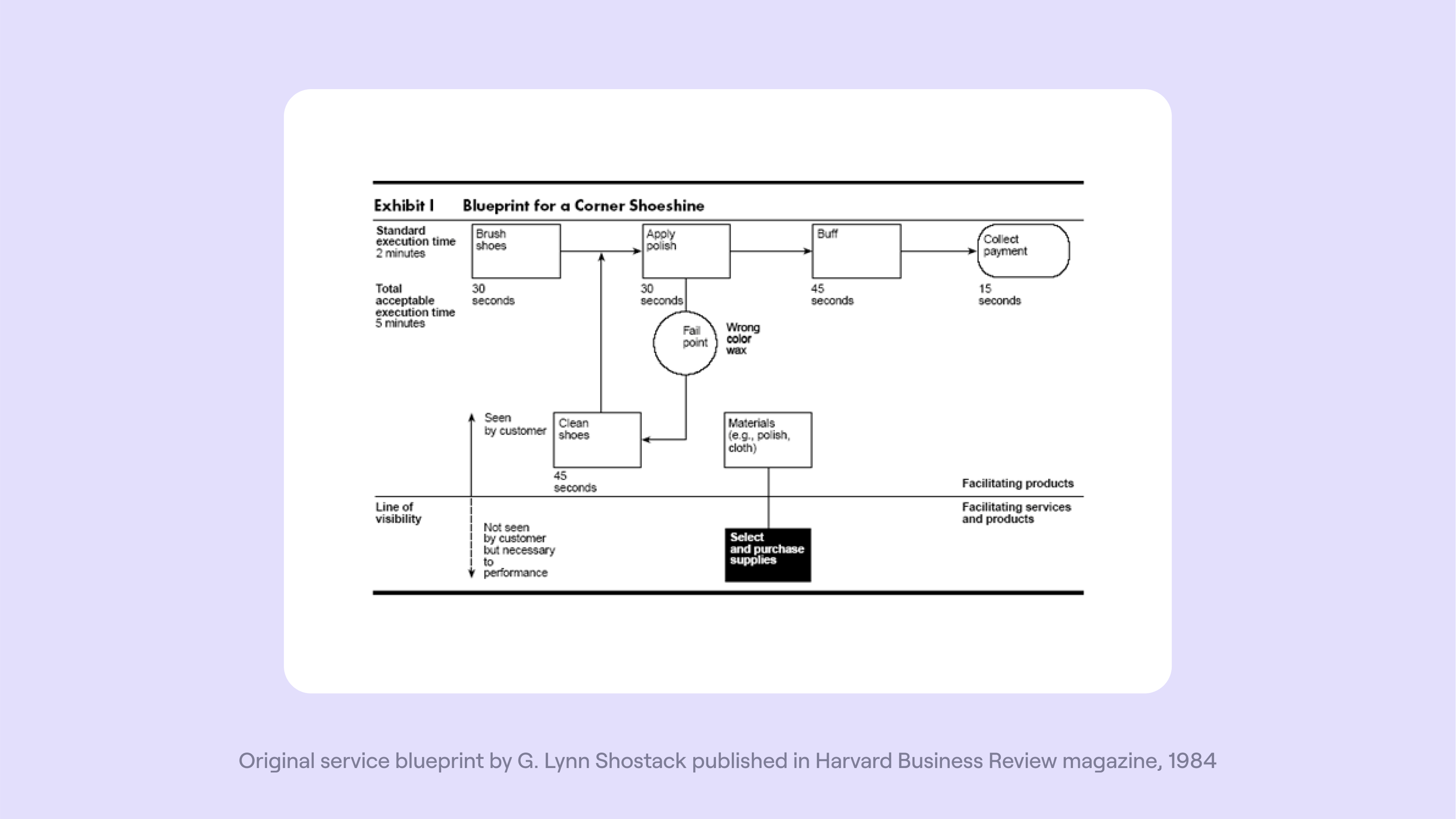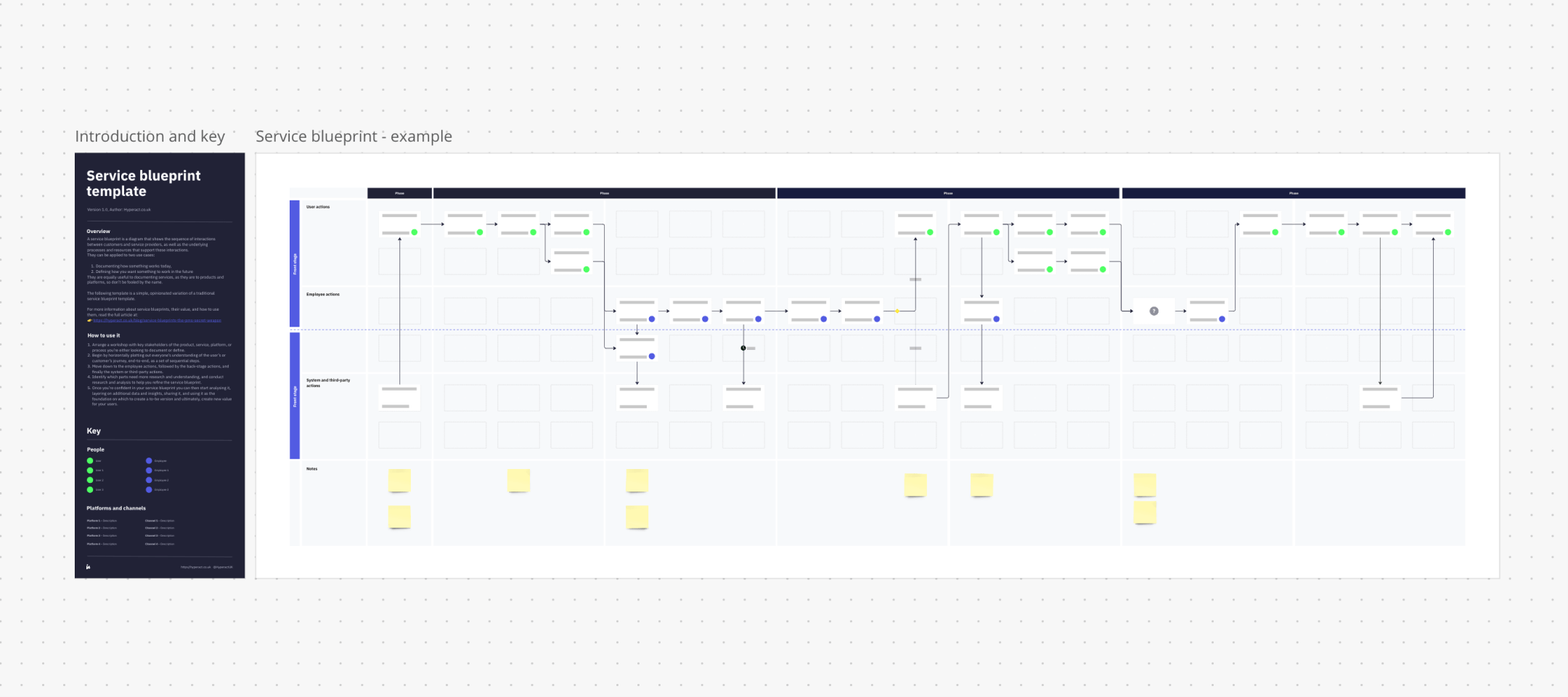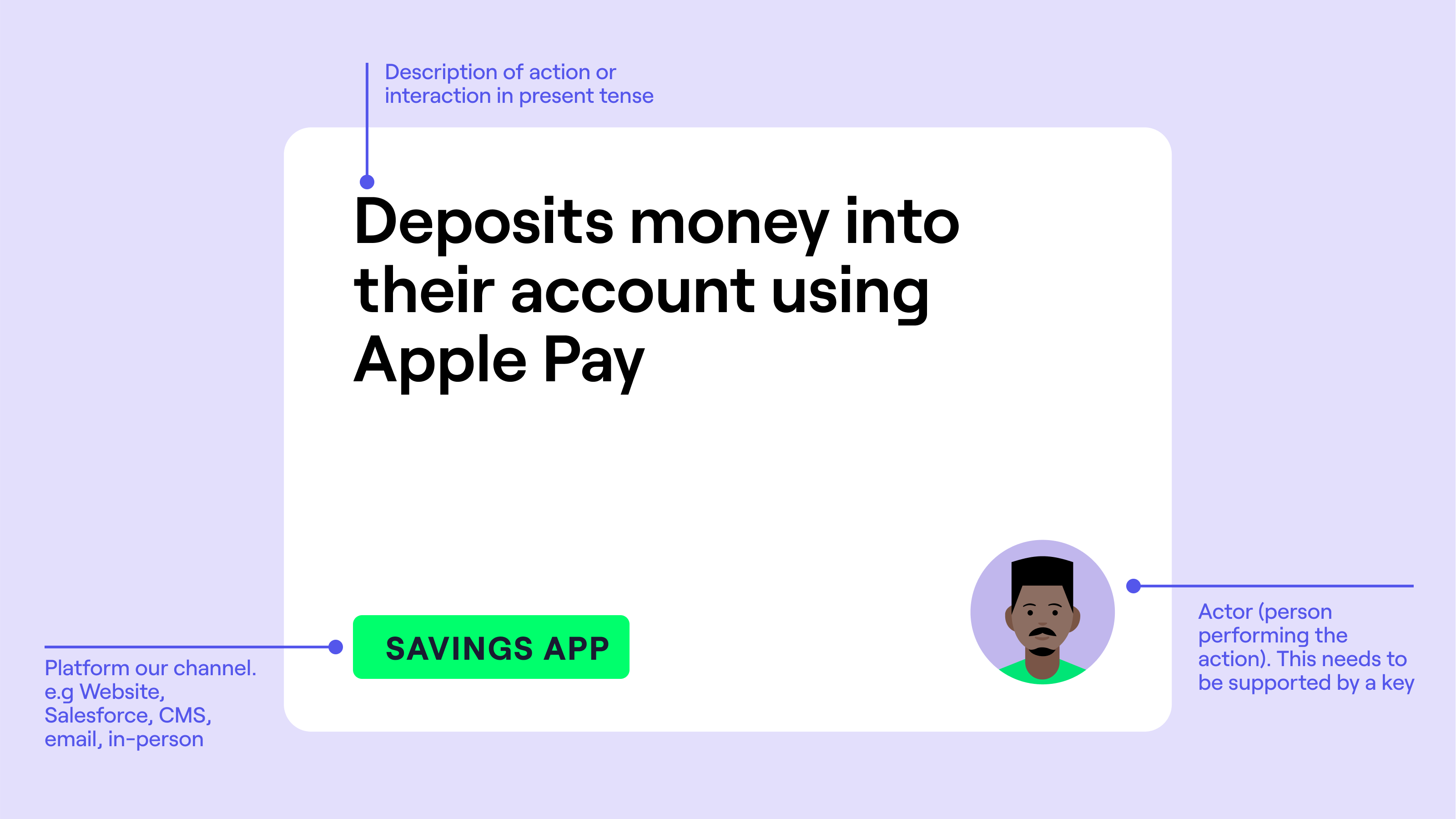Service blueprints: The product manager's secret weapon
Since first being introduced to service design at the Design by Fire conference back in 2011, and learning about service blueprints shortly after, they have become one of my most used and most loved tools.
I’ve applied them in many different contexts, from designing public sector services, SaaS products, and e-commerce to personal finance, utility companies, marketplaces and more. I’ve rarely found a situation where they can’t help demystify an existing process or provide a compelling target state to move towards.
“Service design is not only useful to create value for the ‘end-user’ or ‘customer’, it addresses the entire value ecosystem. In other words, service design works for public services, B2C, B2B, and internal services.” – Marc Stickdorn, This is Service Design Doing
While their name implies they’re only applicable to what would traditionally be described as a service, they are just as useful and applicable to products. These days the lines between product and service are increasingly blurred and applying service design thinking to what would otherwise be considered a product, can help you identify new ways of creating value and better serve your users.
This article provides an overview of what service blueprints are, why they’re valuable (particularly to product managers) and how to create them.
What is a service blueprint?
A service blueprint is a diagram that shows the sequence of interactions between customers and service providers, as well as the underlying processes and resources that support those interactions. They can be applied to two use cases: Documenting how something works today, and defining how you want something to work in the future.

The technique was pioneered nearly 40 years ago by G. Lynn Shostack, and while it’s moved on a bit since then, there are usually some common and enduring characteristics:
- It is a sequential diagram
- There is a division between front-stage (visible, user-facing interactions) and back-stage (invisible to the user actions) activities
- There are multiple actors (not just the user)
- It spans multiple channels (not just online)
- It takes an end-to-end view, from someone needing to no longer needing the service (this can sometimes be cradle-to-grave)
So not much to fit into a single diagram then! This is why, if you’ve come across a physical one before, you’ll know they are also, often ginormous.
What are service blueprints useful for?
👀 Visualising how something works
Many organisations I’ve worked with rely solely on mental models to understand how their existing products, services or processes work. Some parts might be documented. Some not at all. Often none of it is. And so just having a single artefact that represents this, can be extremely powerful and eye-opening.
🤝 Strengthening relationships and creating a shared understanding
Often the best way of improving a system is to strengthen its relationships. The collaborative process of creating a service blueprint is sometimes just as valuable as the artefact itself.
💊 Identifying improvements
Once you’ve visualised your product and service through a blueprint, it acts as an effective basis for analysis, by making pain points, redundancies, and inefficiencies visible, making it easier to propose improvements and experiments.
🌄 Describing a vision
By creating a blueprint of the desired future state, you can communicate your vision to stakeholders and create a shared understanding of what needs to be achieved.
🧀 Identifying steps that will move you forward
Once a vision has been established, service blueprints can be used to identify the steps required to move towards that vision, and where your gaps and main assumptions are to inform priorities.
👍 Getting stakeholder buy-in
They are also incredibly effective at getting stakeholder buy-in for new initiatives or changes to existing ones. I’ve created many service blueprints solely for this purpose. Labouring over a highly visual, engaging blueprint that your senior stakeholder can blue tack to their wall can be a worthy pursuit if it means you get the necessary investment to affect the change you want.
How can service blueprints help product managers?
The product manager’s role, more than anyone else, is to drive product success by balancing the needs of users with the objectives of ‘the business’. Service blueprints bring together these too-often separated concerns and enable the Product Manager to prioritise more effectively, based on the insights they serve up.
Another key responsibility that Product Managers are regularly bestowed is defining a vision for the product. While probably a bit too big and detailed to pull out in an elevator, the service blueprint shows the lower-level thinking behind your typical product vision statement and can help make your imagined future seem more tangible.
As Product Manager, you (rightly or wrongly) are also usually the first port of call for any product questions. So knowing every aspect, interaction, system, and person involved in your product gives you the ammunition to answer questions confidently. Good product managers will also take it upon themselves to share understanding about their product and align stakeholders across their organisation - what better tool to do that than the service blueprint?
How do you create a service blueprint?
What you’ll need
First of all, you don’t need a designer, nor a Service Designer, to create a service blueprint. It’s a relatively simple technique that, with a bit of practice, anyone can learn. Designers can provide efficiency, polish, and coaching, so if you have someone with service blueprinting experience, use them, but don’t let it stop you.
If you choose to create a physical service blueprint in-person, you’ll need a big wall or window and a stack of post-it notes and sharpies. If you’re creating a digital blueprint with remote participants, a collaborative whiteboard tool like Miro is your best bet.
To make the process easier, we’ve created our own service blueprint Miro template to get you started.

Where to start
Typically I’d start with a workshop with key representatives from a broad range of stakeholders. You want a mix of the people who know the product or service the inside-out, key decision-makers and dependencies. A stakeholder map can be a good place to start if you’re not sure who involve. Depending on your shortlist of attendees, it might be more practical to run a series of workshops, to keep them productive and give people the room to speak freely. It’s worth blocking out plenty of time for your initial service blueprinting workshop. 2 hours + would be my starting point.
Start the workshop by setting the context, framing the problem, and explaining the technique. Once this is done, as a team, with an appointed facilitator/post-it wrangler, begin by horizontally plotting out everyone’s understanding of the user’s journey, end-to-end, as a set of sequential steps.
Having seen the complexity that ensues when many different people and systems are involved in providing a service, I’ve come up with a service blueprint card/post-it template that makes the overall diagram easier to follow and reduces the number of swim lanes.

Once you’ve reviewed and agreed on the user’s journey, then move down to the front-stage interactions with the business, followed by the back-stage actions, and finally the system actions.
The goal of this initial workshop is not to have a complete, perfect service blueprint by the end of it, it’s to build shared understanding, surface contention, and to identify which parts of the blueprint need more research and understanding.
Where to go next
With your service blueprint taking shape, your next step is to conduct research and analysis to help you refine it to the point that you and the rest of your stakeholders feel adequately represents reality. What research and analysis techniques you need to employ, or how much detail you need to go into, will be down to the collective confidence in the accuracy of your blueprint. But regardless of how confident you or your stakeholder might be, I would always advocate conducting some form of primary research to help validate your understanding.
Once you have a suitable degree of confidence in your service blueprint you can then start analysing it, layering on additional data and insights, sharing it, and using it as the foundation on which to create a to-be version and ultimately, create new value for your users.
Things to look out for
One of the main issues I’ve seen with service blueprints is letting them go stale. This is a lot easier done when the blueprint has been created in something like Illustrator or Photoshop, which are less accessible to non-designer. While highly visual service blueprints have their place, if you’re looking to use it more as a team artefact I would suggest creating it in a format that everyone can edit, like Miro or Mural. The blueprint is less likely to go stale if the whole team has ownership of it, and has the skills to update it. Sticking in a periodic reminder to review and update the blueprint call also help ensure it’s kept fresh.
Another thing to be mindful of when creating your service blueprint is complexity. Service blueprints are communications tools. Understanding what you’re aiming to communicate and to whom should help inform how detailed to make them. In the past, when a service blueprint has become too unwieldy, I’ve done a number of things:
- broken it up into a series of blueprints, either by persona, phase, or happy/unhappy path
- combined steps and simplified
- created different levels of service blueprint: A high-level blueprint that paints the end-to-end picture, and then more detailed blueprints underneath that
Summary
Service blueprints are becoming increasingly popular with product managers as they blur the lines between products and services, providing valuable insight into the customer journey. Service blueprints map the sequence of interactions between the customer and service provider, highlighting both visible and invisible interactions. The visualisation can be used to document existing processes, identify improvements, communicate a vision, prioritise and create buy-in. They also bring together the needs of the user and the objectives of the business, enabling product managers to prioritise more effectively. While designers can provide expertise in creating service blueprints, the technique is relatively simple and can be used by anyone with practice.

